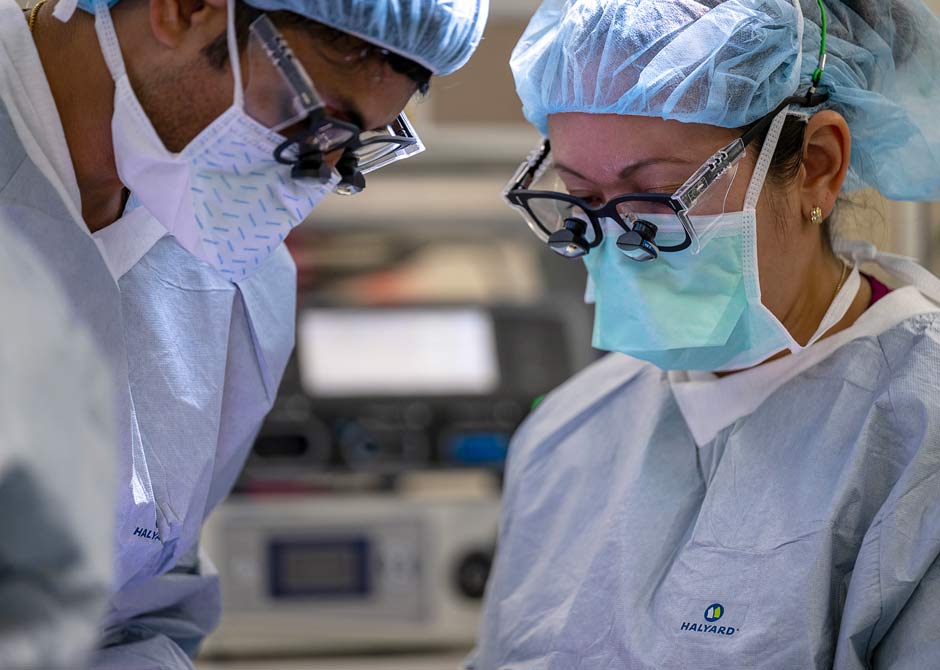 Whether in a midnight emergency aneurysm surgery or an 18-hour elective procedure, Kristine Orion, MD, brings both passion and purpose to her profession as a vascular surgeon at The Ohio State University Wexner Medical Center.
Whether in a midnight emergency aneurysm surgery or an 18-hour elective procedure, Kristine Orion, MD, brings both passion and purpose to her profession as a vascular surgeon at The Ohio State University Wexner Medical Center.
Vascular surgery requires laser focus, creativity and the ability to pivot. Procedures are as much an art as a science.
“You have to have creative solutions because these are very complex problems, and that’s one of the reasons why patients come to Ohio State,” Dr. Orion says.
Helping patients overcome impossible odds motivates Dr. Orion to power through hours-long surgeries.
“Cases that go well when I think we’re going to face more difficulty are what keep my light on,” she says.
Dr. Orion is committed to improving patient care by increasing access and advancing research. She directs Ohio State’s Aortic Center, where a multidisciplinary care team collaborates to simplify the patient journey. In one visit, patients can schedule an appointment with a vascular surgeon, a cardiologist and a cardiac surgeon, while also getting imaging.
This convenient care model results in better outcomes.
“In some tough surgeries, vascular and cardiac surgeons work side by side. There has to be tremendous collaboration, which we’re fortunate to have at Ohio State,” says Bryan Tillman, MD, PhD, a vascular surgeon at The Ohio State University Wexner Medical Center and an associate professor of Surgery at The Ohio State University College of Medicine.
As the volume of aortic cases at the Aortic Center has increased, so has the complexity.
“Simple aortic cases are hard to come by here. We usually get cases other hospitals deem too high-risk,” Dr. Tillman says.
The new clinical trials and medical devices available at the Ohio State Wexner Medical Center are another reason patients choose the Aortic Center. Of the clinical trials Dr. Orion oversees, most of her focus is on aneurysms.
She’s most excited about the stAAAble trial, which may shrink or slow the growth of aneurysms that aren’t large enough for surgical intervention.
“This might be a game changer because we haven’t intervened on small- to moderate-size aneurysms since the late eighties, which didn’t work,” Dr. Orion says.
Another clinical trial that looks promising is the AAA-SHAPE trial. Its goal is to prevent stent leaks that can occur decades after minimally invasive surgery. In this trial, the surgeon places collagen plugs in the aortic sac at the stent site to help the blood clot and the aneurysm shrink.
Dr. Orion’s commitment to research, her ability to share her passion and her breadth of knowledge make her an inspiring teacher and mentor.
“Her biggest asset is that she’s an excellent teacher who gets everybody where they need to be to deal with difficult cases,” Dr. Tillman says.
Alexandra Gobble, MD, chose to do her residency at Ohio State partly because of Dr. Orion’s leadership. As chief resident now, Dr. Gobble strives to emulate Dr. Orion’s teaching, especially during difficult vascular surgeries.
“Besides her amazing surgical skills, I hope to model how she trusts us, commands respect in the operating room and cares so much about the patient. If I could be like any surgeon, it would be Dr. Orion.”
